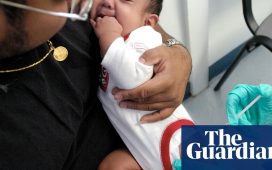
Bicycle accidents can result in severe injuries and even fatalities, making establishing fault in such cases crucial. A Miami personal injury attorney can make this determination and help allocate responsibility for the accident, facilitate insurance claims, and ensure the responsible party is held accountable for their actions.
According to Florida law, cyclists have the same rights and responsibilities as other drivers on the road. In addition, Florida follows what is known as a modified comparative negligence system, as outlined under section 768.81 of the Florida Statutes.
Understanding Miami’s bicycle accident laws and regulations empowers cyclists and motorists. With the help of an experienced personal injury lawyer, Miami residents can navigate the legal landscape and get the help they need for a successful bicycle accident claim.
Understanding Bicycle Accident Liability
Determining fault and liability involves examining the actions and responsibilities of all parties involved in an accident, which means understanding the concepts of negligence and liability is crucial. Negligence is defined as the failure to exercise reasonable care, resulting in harm or injury to others.
In bicycle accidents, negligence may involve distracted driving, speeding, failure to yield, or disregarding traffic laws. Liability, however, is the legal responsibility for the damages and injuries caused by a negligent party.
Courts determine liability by assessing the degree of negligence and the resulting harm. Parties deemed negligent may be liable for medical expenses, property damage, lost wages, and other losses.
The difference between comparative and contributory negligence
Comparative negligence is a legal principle that allows for the allocation of fault and liability based on the degree of negligence demonstrated by each party involved in an accident. If damages are awarded, they will be reduced in proportion to the percentage of fault attributed to the injured party.
Contributory negligence is an older legal doctrine and is rarely applied in modern legal systems. Under the doctrine of contributory negligence, if law enforcement finds the injured party at fault for the accident, even by a degree of 1%, the injured party may be barred from recovering any compensation. This strict standard burdens the injured party, making it more challenging to seek damages.
Evidence is crucial when establishing fault and liability in bicycle accidents. Evidence can include photographs of the accident scene, witness statements, police reports, and medical records. Evidence will also help when a Miami personal injury attorney settles a claim with an insurance company and increases the likelihood of a fair settlement.
Gathering Evidence at the Accident Scene
Collecting evidence at the accident scene will support the case and protect the victim’s rights. Evidence will strengthen the case when a personal injury attorney in Miami negotiates with insurance companies, pursues legal action, and seeks compensation.
To gather compelling evidence at an accident scene, take the following steps:
- Obtain contact information, such as names and phone numbers, from witnesses at the scene. Their testimonies can provide additional perspectives.
- Use a smartphone or camera to photograph and record the damaged bicycle, any visible injuries, skid marks, traffic signs, and the surrounding environment.
- Make notes of environmental factors such as road conditions, weather conditions, traffic signs, or signals. These observations can provide context and help establish any factors that may have contributed to the accident.
- If there are any relevant physical objects at the scene, such as broken bicycle parts or damaged property, preserve them as evidence. These items may be critical to proving liability and assessing damages.
After collecting evidence at the scene of the accident, consult with an experienced personal injury lawyer who specializes in bicycle accidents. They can review the evidence and advocate for their client’s rights and best interests.
Reporting an Accident
In the aftermath of a bicycle accident, reporting the incident to law enforcement and notifying insurance companies is vital. After the police are notified, they will create an official report detailing the accident. This report will include essential information such as the date, time, location, parties involved, and potential witnesses.
In addition, reporting the accident to the police demonstrates compliance with legal obligations. In many jurisdictions, including Miami, reporting an accident involving injuries, significant property damage, or a hit-and-run situation is a legal requirement. Failure to report an accident when required can result in legal consequences.
An official police report holds significant weight when determining fault and liability. Insurance companies often rely on police reports to assess and process claims. These reports provide an unbiased account of the accident, which can help expedite the claims process and establish liability.
Examining Miami’s Traffic Laws and Regulations
Miami has specific laws in place that regulate the operation of bicycles. Some key provisions of these laws include:
- Bicycle lanes: Cyclists should use designated bicycle lanes whenever available, and motorists must respect these lanes and avoid driving or parking in them.
- Sidewalk riding: In Miami, unless otherwise prohibited by local ordinances, cyclists can ride on sidewalks. However, they must yield to pedestrians and exercise caution.
- Helmet requirement: Florida state law states that cyclists under 16 must wear helmets while operating a bicycle. Of course, law enforcement would advise that cyclists of all ages wear helmets for safety.
- Lighting and reflectors: Bicycles operated at night must have a white front light visible from 500 feet and a red rear reflector or light visible from 600 feet.
- Stop sign compliance: Cyclists must come to a complete stop at stop signs and yield the right-of-way as necessary.
Cyclists must understand the right of way to determine priority at intersections or when merging into traffic. At intersections without traffic signals, the first vehicle (a bicycle or motor vehicle) to arrive has the right-of-way. If multiple vehicles arrive at the same time, the vehicle on the right generally has priority.
Consult with a Miami Personal Injury Attorney
After a bicycle accident in Miami, seeking legal advice from an experienced personal injury attorney in Miami is critical. Some of the benefits an attorney can provide include:
- Assessments of liability through facts, evidence, and applicable laws.
- Guidance on how to protect your rights.
- Negotiating with the insurance company on their client’s behalf.
- Representation in court, if necessary.
A Miami personal injury attorney will have an in-depth knowledge of Miami laws and regulations, allowing them to build a compelling case on behalf of their client. Attorneys can help collect evidence, perform accident reconstructions, and identify any negligence or wrongful actions that will help determine fault.
Assertive Advocacy with Empathetic Support
Determining fault in a bicycle accident is critical to achieving justice, securing compensation, and preventing future incidents. It ensures the responsible party accounts for their actions and provides a basis for resolving legal matters.











